The document discusses the increasing frequency of network attacks, particularly denial of service (DoS) and IP spoofing, emphasizing the difficulty in detecting such attacks. It outlines methods for attackers to gather information about target systems, such as identifying IP addresses, operating systems, and open ports, while proposing a model for protection against these attacks. The paper also details tools that can be utilized for executing attacks and analyzing vulnerabilities in target systems.
![International Journal of Network Security & Its Applications (IJNSA), Vol.3, No.3, May 2011
DOI : 10.5121/ijnsa.2011.3302 16
COUNTERMEASURE TOOL - CARAPACE
FOR NETWORK SECURITY
Anand Bisen1
, Shrinivas Karwa2
, B.B. Meshram3
1,2,3
Department of Computer Engineering, Veermata Jijabai Technological
Institute, Mumbai, MH, India
1
anandbisen2008@gmail.com, 2
shrikarwa1@gmail.com,
3
bbmeshram@vjti.org.in
Abstract
Now a day frequency of attacks on network is increased. In this, denial of services (DOS) and IP
spoofing are more common. It is very difficult to find out these attacks.
Denial of services (DOS) and its type Distributed denial of services (DDOS) are significant problem
because it is very hard to detect it. Its main aim to shut resource from internet, and make resource
unavailable to legitimate users. IP source address forgery, or “spoofing,” is a long-recognized
consequence of the Internet’s lack of packet-level authenticity. IP spoofing is very powerful when it
implemented with Distributed denial of services (DDOS).
In this paper we deal with the information gathering process to do attacks. The information gathering
about the weaknesses of the target system and helps to do attack. Lastly we proposed a new model to
protect from attacks.
Keywords
Distributed denial of service (DDOS), IP spoofing
1. INTRODUCTION
The Internet was originally designed for openness and scalability. The infrastructure is certainly
working as envisioned by that yardstick. However, the price of this success has been poor
security. For example, the Internet Protocol (IP) was designed to support ease of attachment of
hosts to networks, and provides little support for verifying the contents of IP packet header
fields [Clark 1988]. This makes it possible to fake the source address of packets, and hence
difficult to identify the source of traffic. Moreover, there is no inherent support in the IP layer
to check whether a source is authorized to access a service. Packets are delivered to their
destination, and the server at the destination must decide whether to accept and service these
packets. While defenses such as firewalls can be added to protect servers, a key challenge for
defense is how to discriminate legitimate requests for service from malicious access attempts.
If it is easier for sources to generate service requests than it is for a server to check the validity
of those requests, then it is difficult to protect the server from malicious requests that waste the](https://image.slidesharecdn.com/0511ijnsa02-180928084237/75/COUNTERMEASURE-TOOL-CARAPACE-FOR-NETWORK-SECURITY-1-2048.jpg)
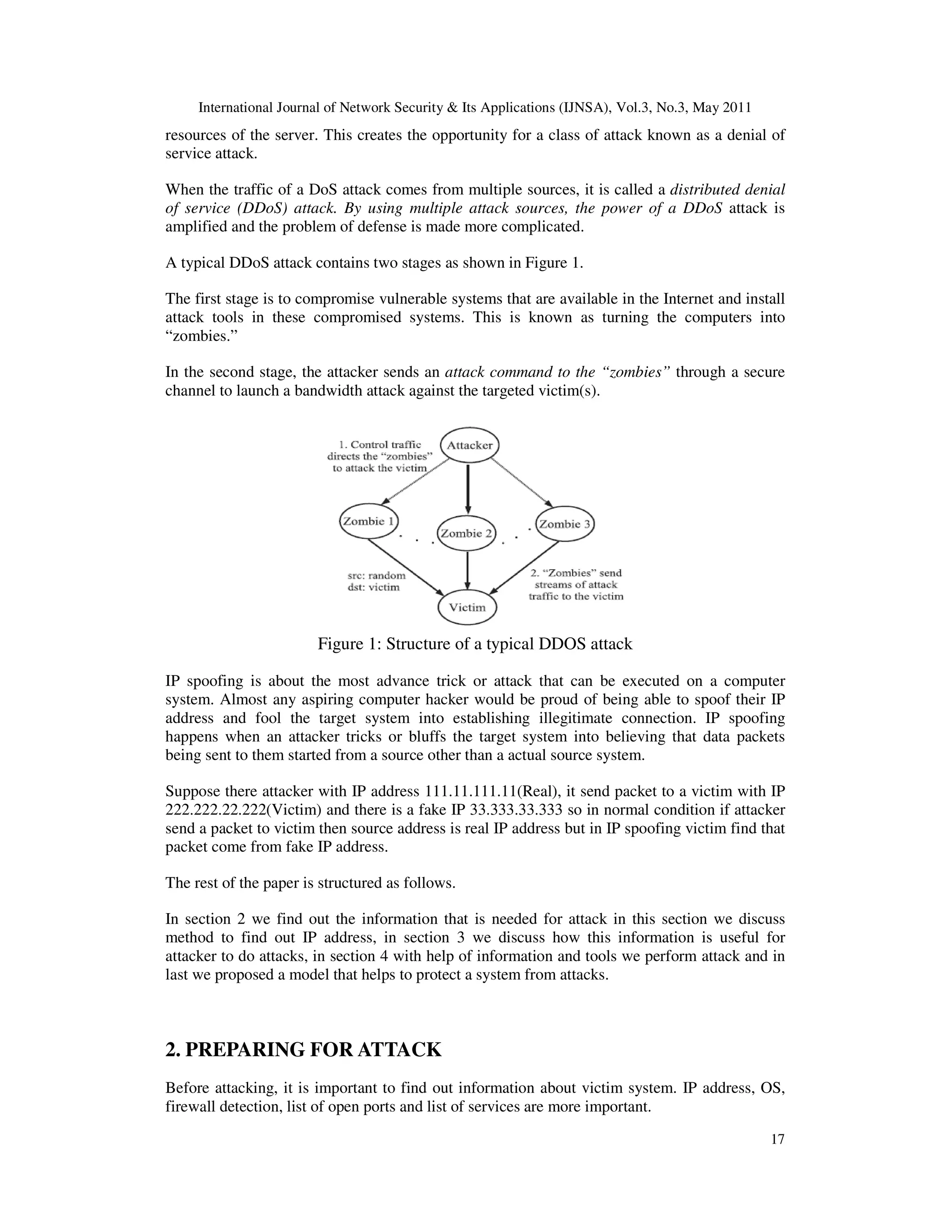
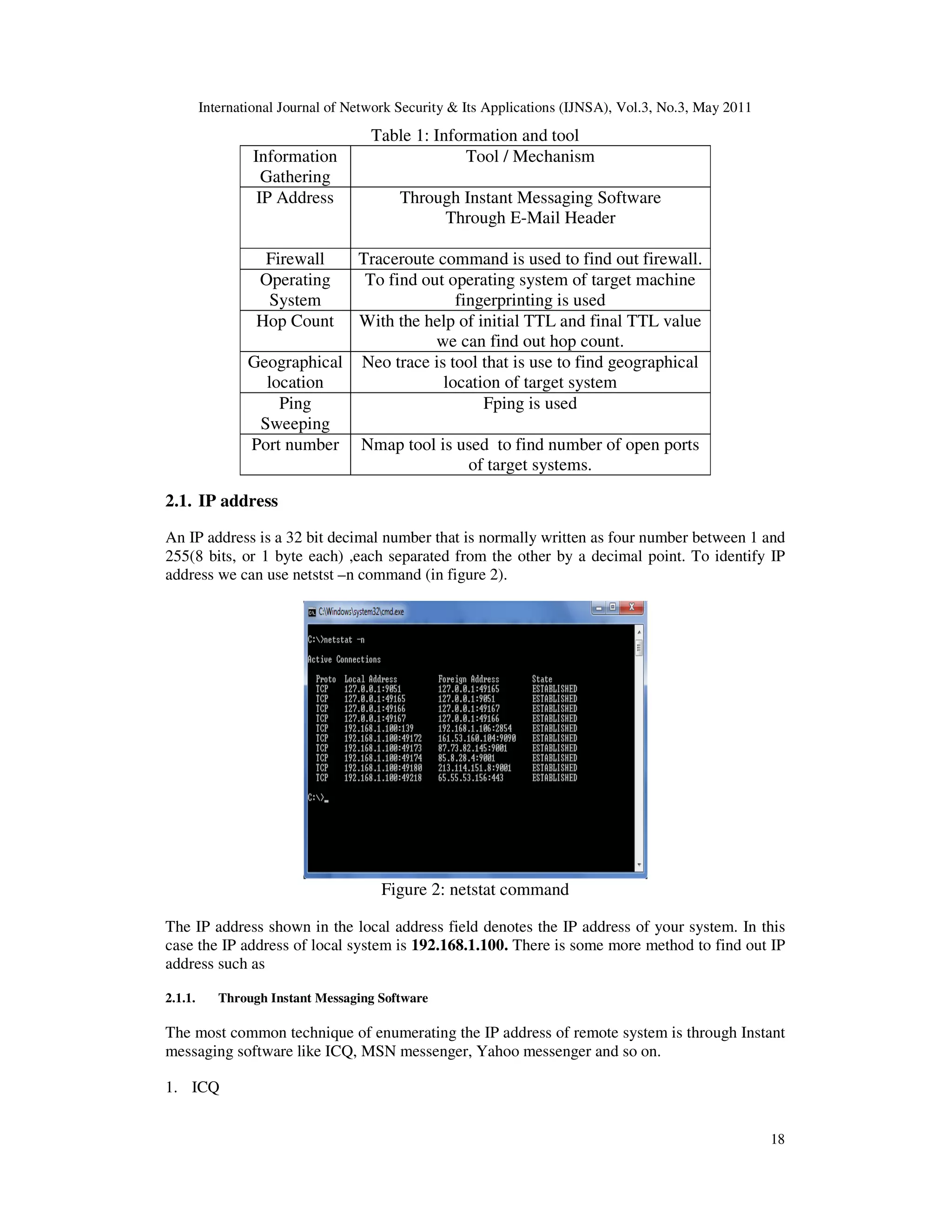
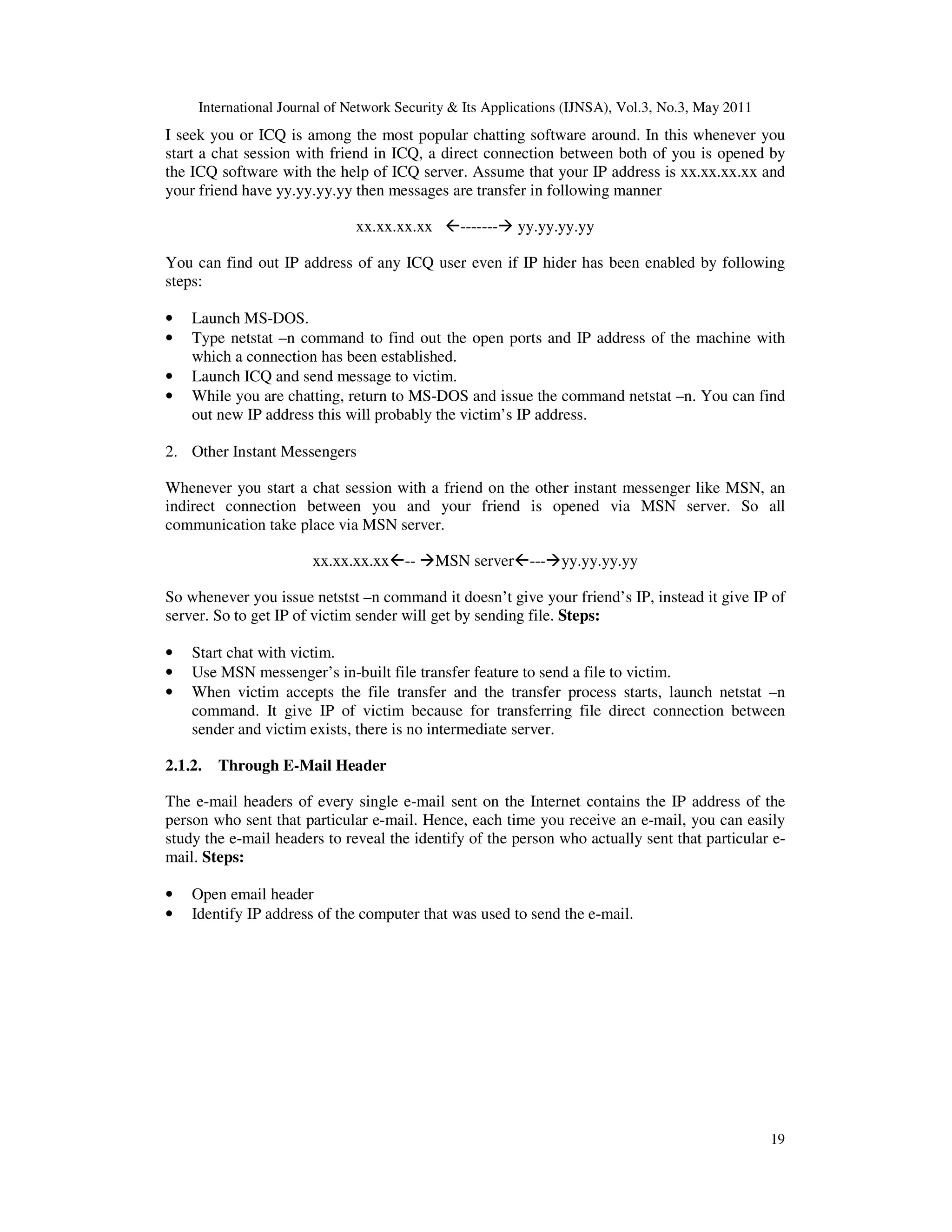
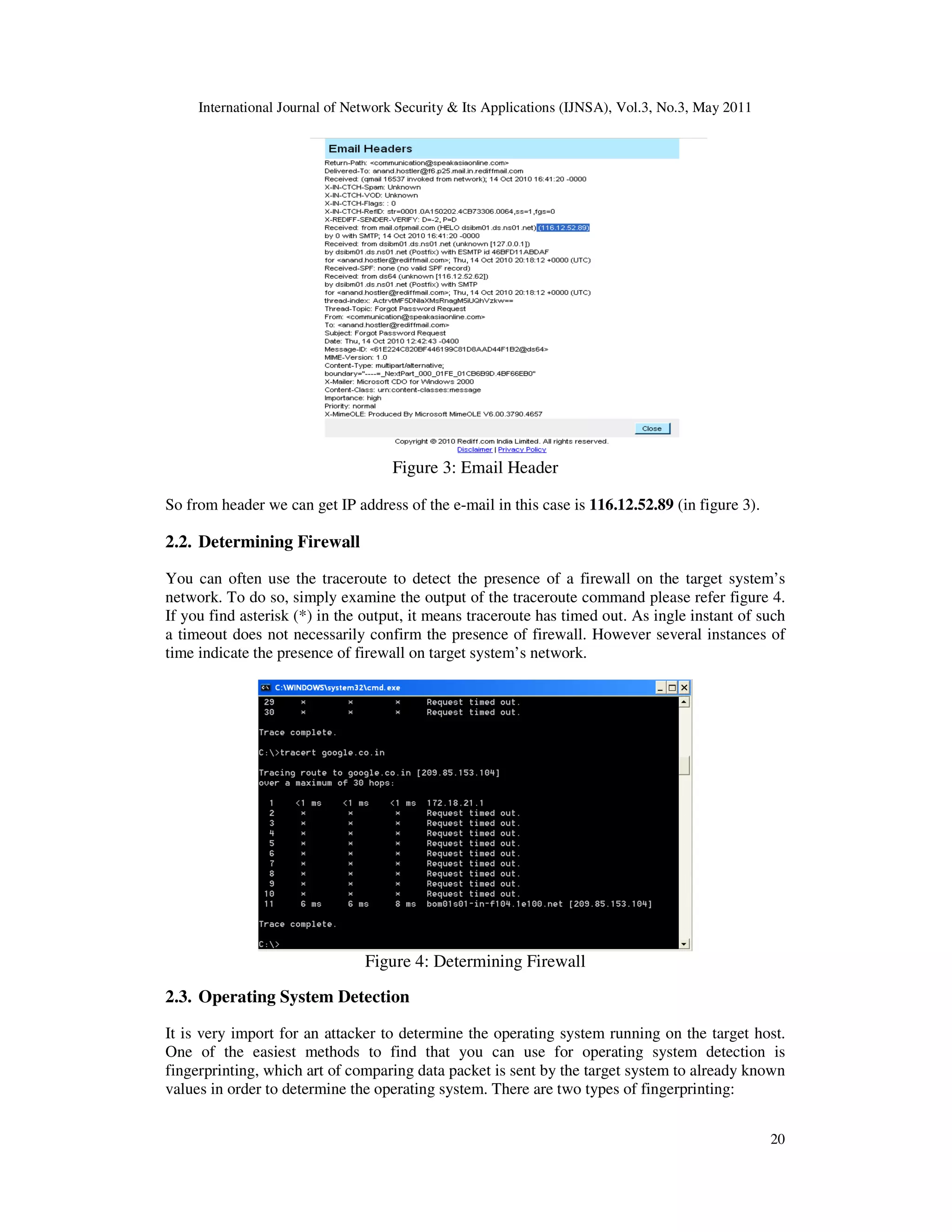
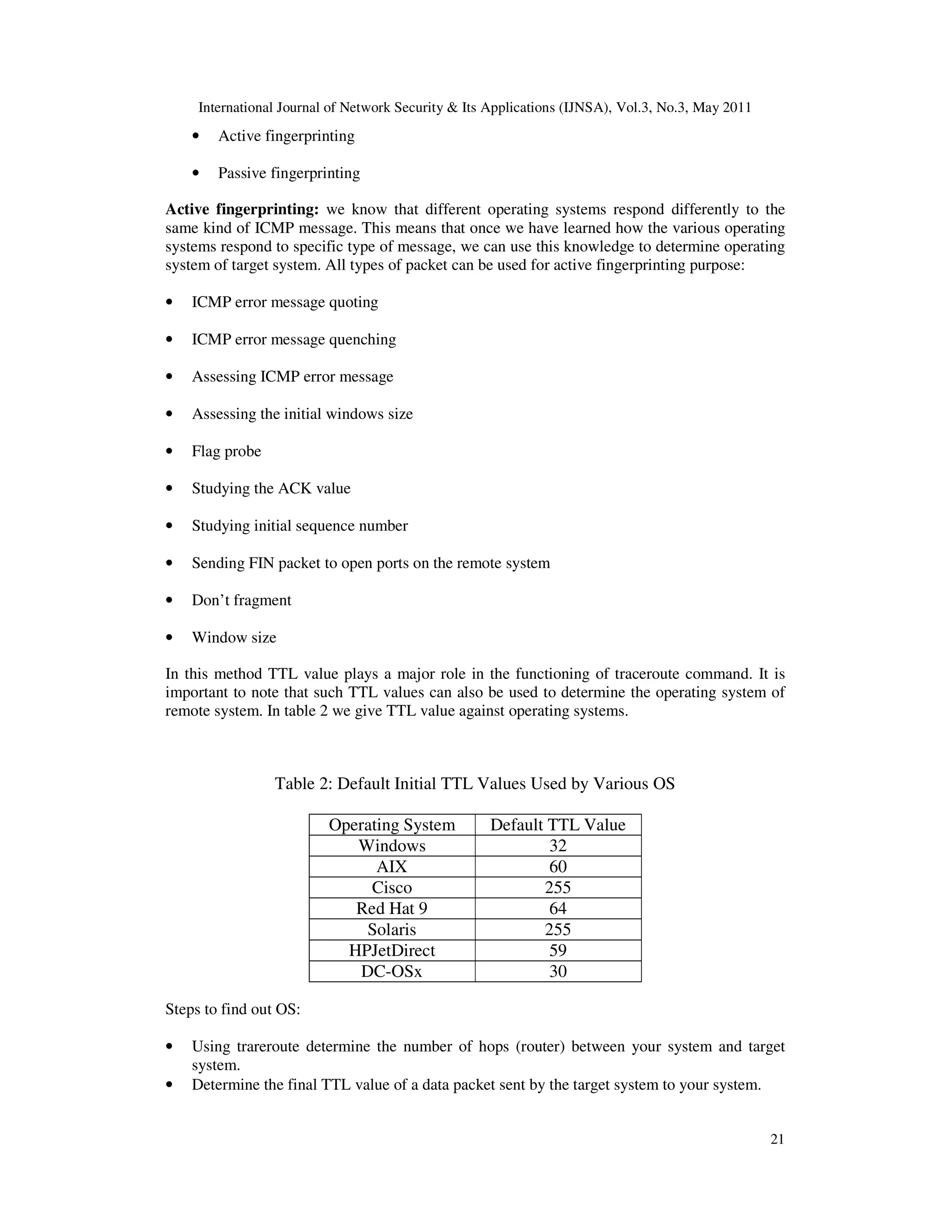

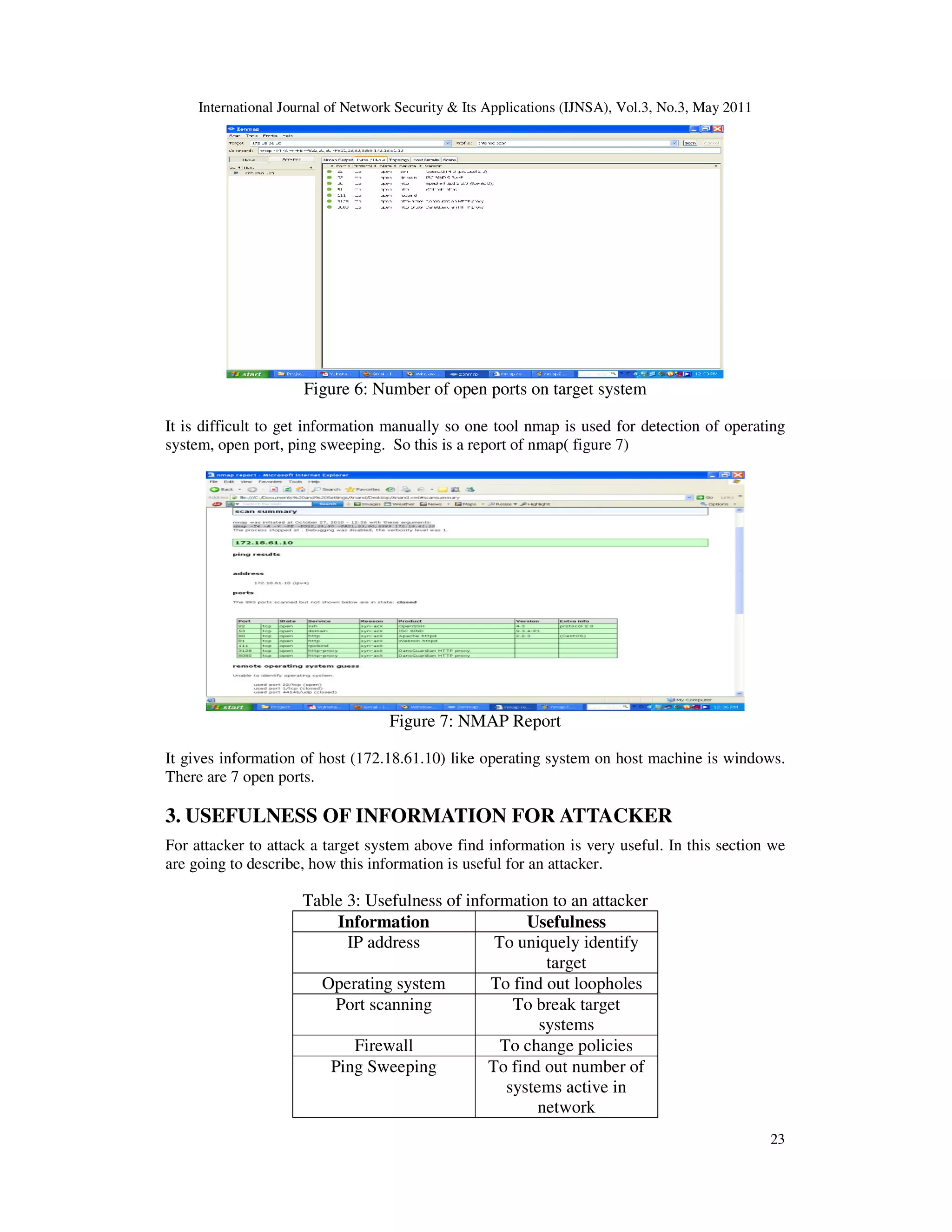
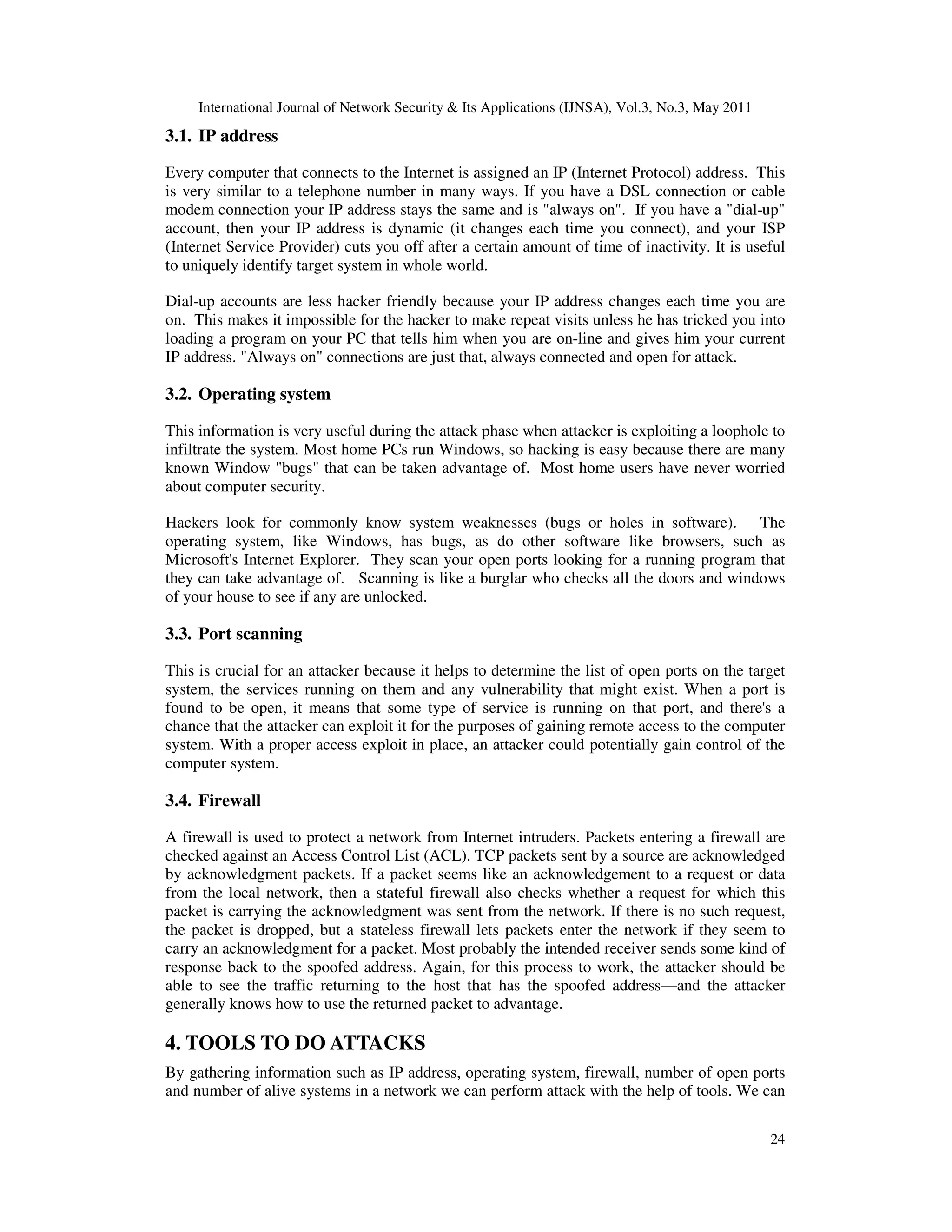
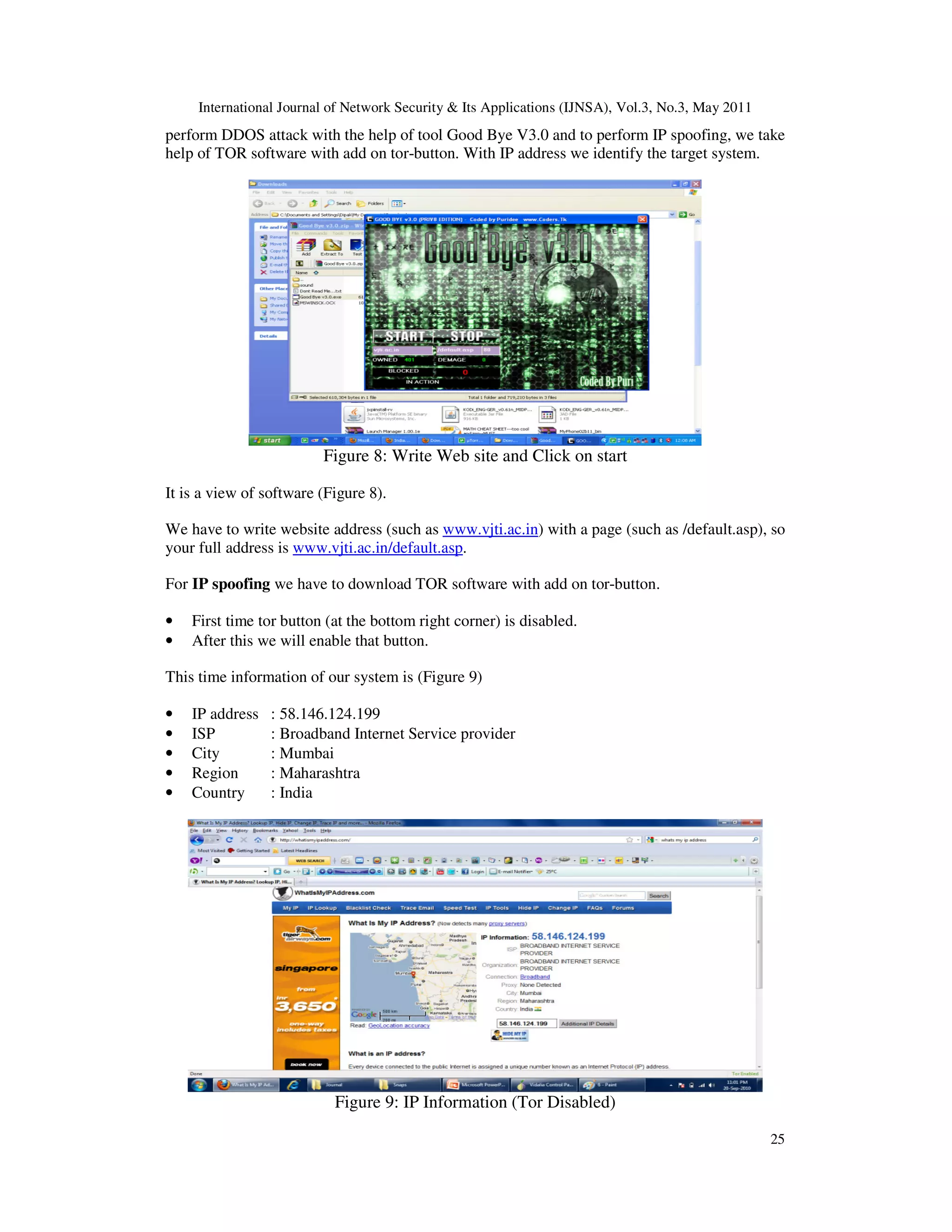
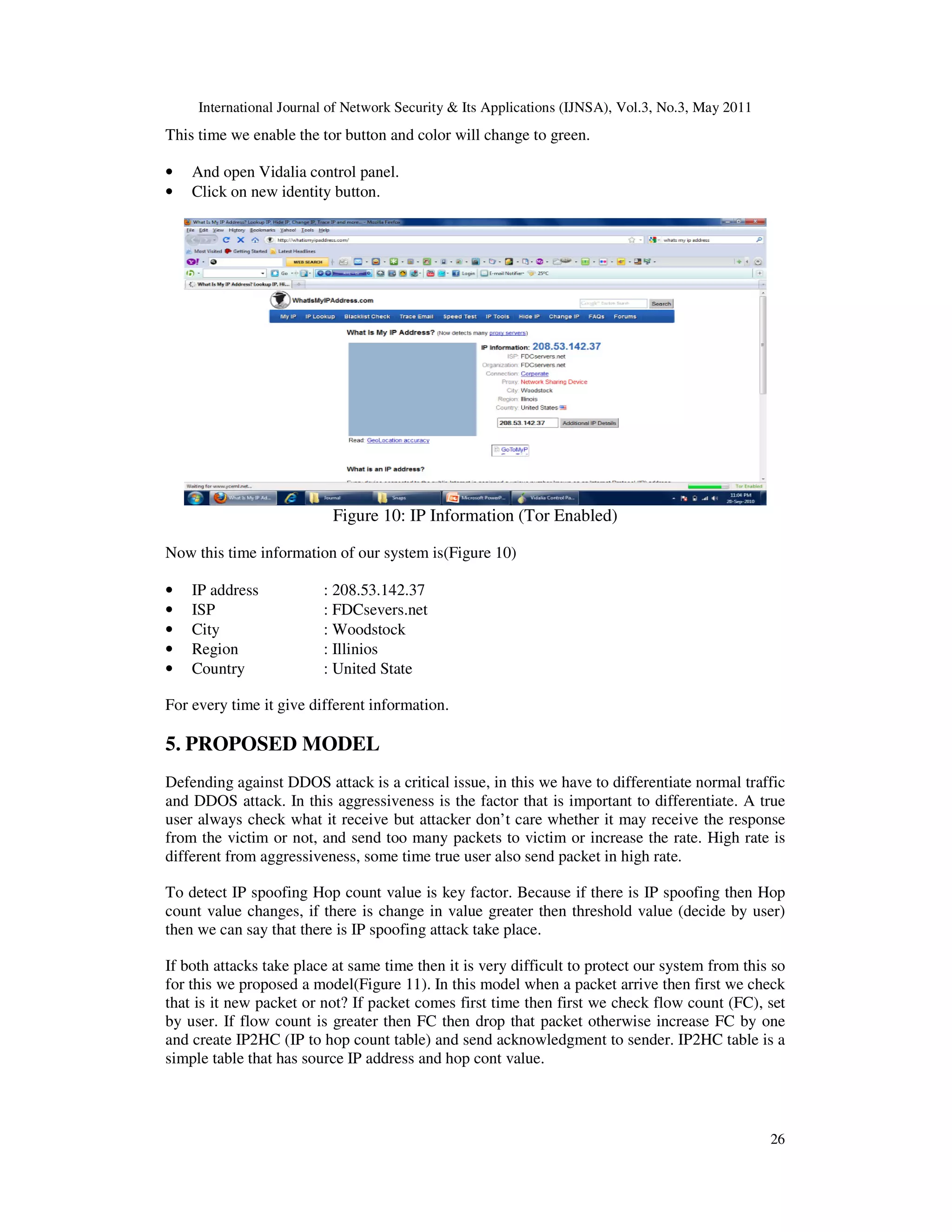
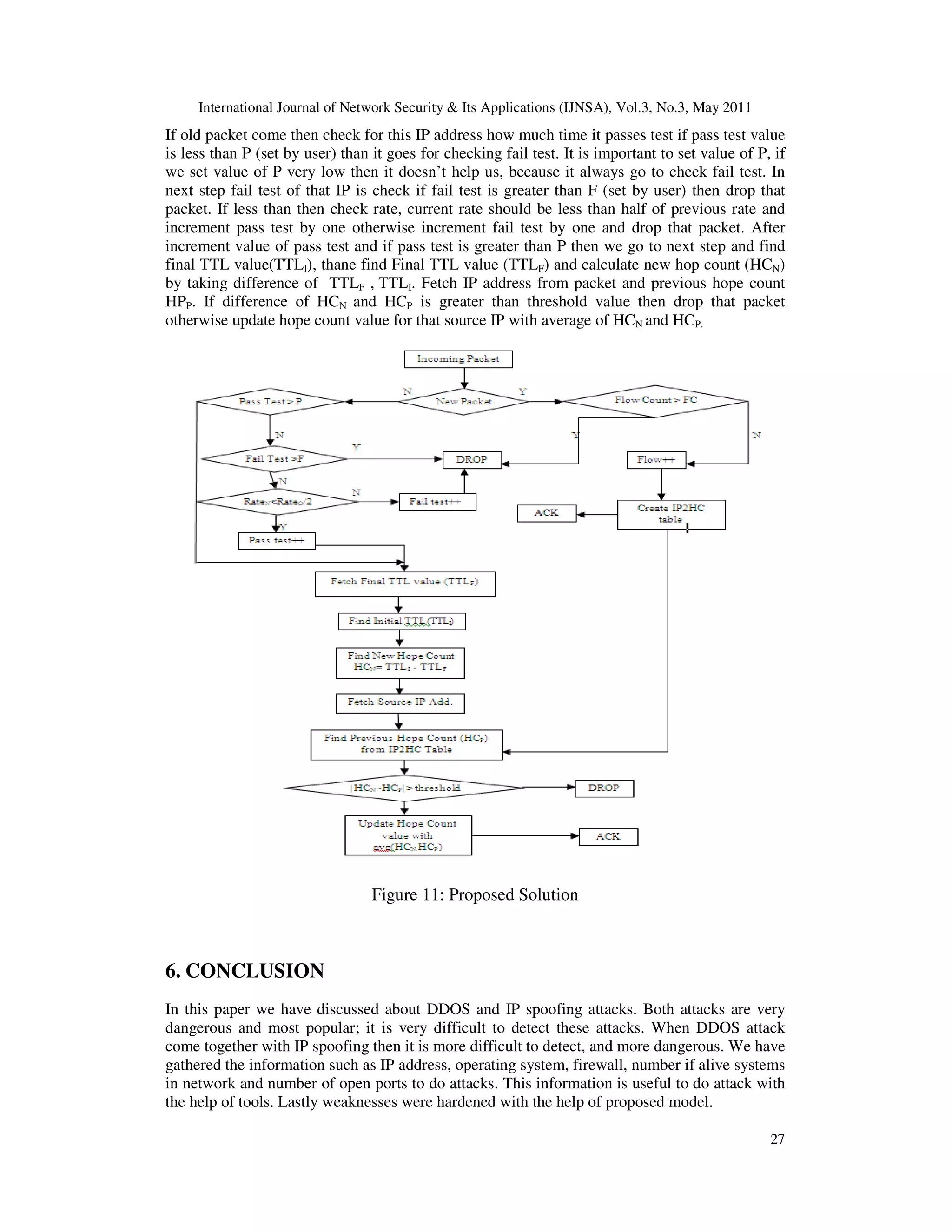
![International Journal of Network Security & Its Applications (IJNSA), Vol.3, No.3, May 2011
28
7. REFERENCES
[1] Zhiqiang Gao, Nirwan Ansari,” Differentiating Malicious DDoS Attack Traffic from
Normal TCP Flows by Proactive Tests” in IEEE and ISBN no is 1089-7798/06.
[2] Amey Shevtekar and Nirwan Ansari,” Is It Congestion or a DDoS Attack?” in IEEE and
ISBN no. is 1089-7798/09.
[3] Greg Goth,” The Politics of DDoS Attacks “ in IEEE and art no. 0708-o8003 .
[4] RAMAMOHANARAO,” Survey of Net work-Based Defense Mechanisms Countering the
DoS and DDoS Problems” in ACM 0360-0300/2007/04-ART3.
[5] Stefan Savage, David Wetherall, Anna Karlin, and Tom A] TAO PENG, CHRISTOPHER
LECKIE, and KOTAGIRI nderson.” Network Support for IP Traceback” in IEEE 1063–
6692/01
[6] Indrajeet B. Mopari, S. G. Pukale,M. L. Dhore,” in ACM 978-1-60558-351-8 ICAC3’09](https://image.slidesharecdn.com/0511ijnsa02-180928084237/75/COUNTERMEASURE-TOOL-CARAPACE-FOR-NETWORK-SECURITY-13-2048.jpg)